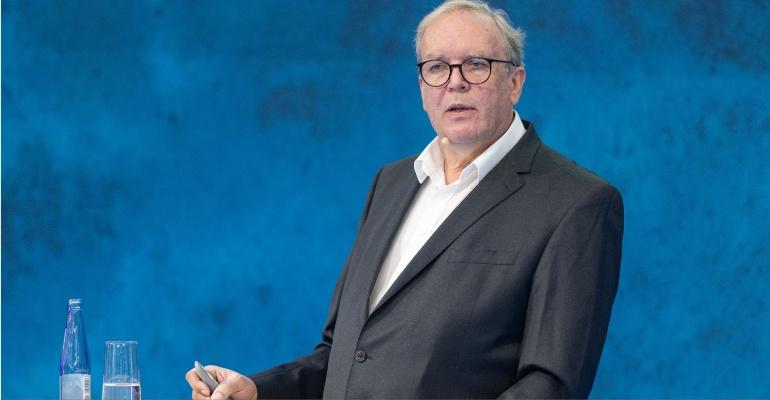The ‘Industry Innovation Spotlight: Installing Shore Power Infrastructure’ session on September 8 began with Grammerstorf addressing relevant European Union regulations.
The Alternative Fuel Infrastructure regulation presented in July 2021 within the scope of the EU Green Deal calls for the implementation of extensive public infrastructure for alternative fuels, meaning all Trans-European Transport Network (TEN-T) ports with significant cruise traffic must provide shore power by 2030.
The Fuel EU Maritime directive also states that shore power will be mandatory from 2030 onwards for all cruise vessels carrying more than a dozen passengers.
Grammerstorf emphasised ‘time is of the essence’ and said smaller ports will have the most difficulty as they will need to deliver a ‘substantial amount of power’ if cruise ships are to switch off all generators, plus be able to provide energy free of interruption ‘or risk a blackout on board the ships, which is not acceptable.’
Shore power selection
Stationary OPS, module BOPS and mobile BOPS are three means of delivering shore power.
Construction of stationary OPS – a solution with low flexibility but providing the highest level of power at maximum 16.5 MW – takes two years, on average, to complete and will cost around €15m.
Modular BOPS is a highly flexible, scalable maximum 5 MW system that will cost approximately €10m and take one-year to install.
The low voltage mobile BOPS can deliver a maximum of 1 MW. It is also highly scalable and can be integrated into the modular BOPS option. Installation will take a year and cost €3.5m.
An alternative solution?
Grammerstorf touched on the concept of an alternative battery-powered solution being introduced that can deliver power without interruption and support the local grid, deliver energy to all vehicles around the port ‘as long as they are powered by electricity’ and which can be recharged via solar or wind energy or from the grid – ‘or a combination of all these.’
Copyright © 2024. All rights reserved. Seatrade, a trading name of Informa Markets (UK) Limited.
Add Seatrade Cruise News to your Google News feed.  |

